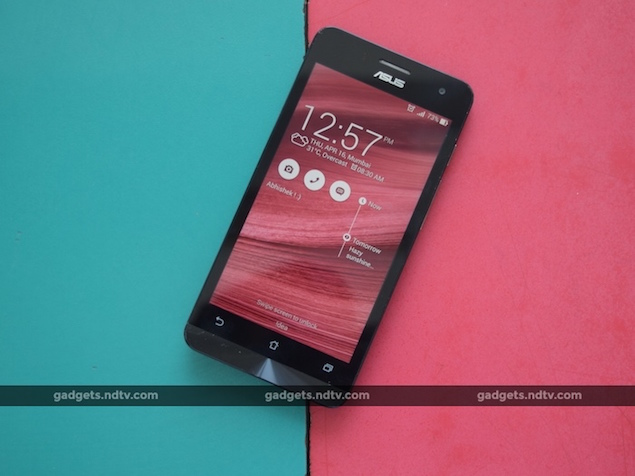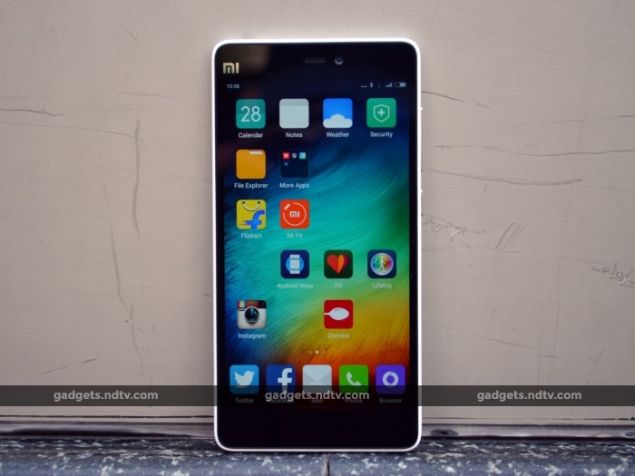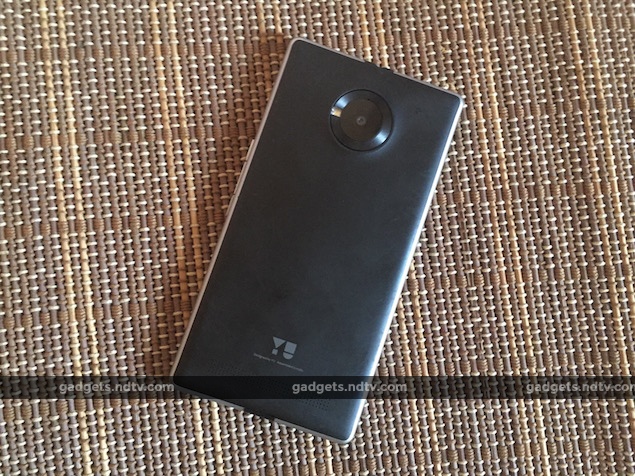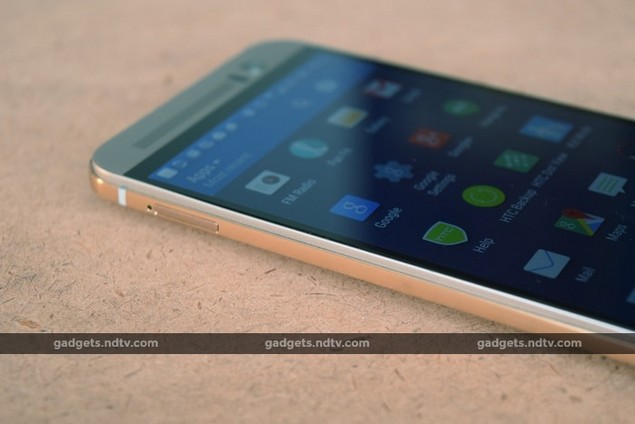Monday 1 June 2015
LG G4 International Giveaway
This is indeed to inform you that this blog is hosting up an LG G4 Giveaway. Everyone who resides from planet earth is eligible to enter. Only 1 lucky participant will going to win this awesome LG G4.
So, concentrate here, gain more entries and have a chance to win this beast.
The drive to create an exceptional visual experience has brought us to this: A ground-breaking camera and display, and cutting-edge design and fabrication, all in the palm of your hand.
The 5.5” IPS Quantum display on the new G4 is brighter, more colorful, and has more contrast than ever before. It’s our boldest and most brilliant yet, kind of like the G4 itself.
LG G4 International Giveaway
Asus ZenFone 2 Review

Way back in 1989, Asus started out as a consultancy service for motherboard manufacturers. According to industry legend, Asus got a leg up in the industry after designing a motherboard for Intel's 486 CPU without access to a processor, even fixing problems that Intel's own engineers had had.
Today, the two are still close partners, and Asus uses Intel's mobile processors in its smartphones and tablets. Last year's ZenFone 4 (Review | Pictures), ZenFone 5, and ZenFone 6 were runaway successes for Asus in India thanks primary to cutthroat pricing and dependable performance. Now, Asus has just launched a new series called ZenFone 2, and the company has been from shouting from the rooftops that the top-end variant has 4GB of RAM.
At the moment, Asus is selling the ZenFone 2 in four different variants in India: the ZE551ML (with 4GB of RAM, 64GB ROM and a 5.5-inch full-HD screen); the ZE551ML (with 4GB of RAM, 32GB ROM and a 5.5-inch full-HD screen); the ZenFone 2 ZE551ML (with 2GB of RAM, 16GB ROM and 5.5-inch full-HD screen), and the ZenFone 2 ZE550ML (with 2GB RAM, 16GB ROM and 5.5-inch HD screen). To add to the confusion, both ZE551ML (4GB) models use the 2.3GHz quad-core Intel Atom Z3580 SoC whereas the ZE551ML (2GB) and the ZE550ML are powered by the 1.8GHz quad-core Intel Atom Z3560. Prices range from Rs. 12,999 to Rs. 22,999.
There are more variants of the ZenFone 2 which the company might launch later. This naming scheme will be really confusing for buyers, because the model number alone does not mean anything. The folks at Asus could easily have avoided this hotchpotch of variants.
Nomenclatures aside, Asus sent us a review unit of the ZenFone 2 ZE551ML with 4GB of RAM and 32GB of storage space. We put the phone through its paces to find out if 4GB RAM actually makes any difference in real-world usage.
Xiaomi Mi 4i Review

For a company that launched its first phone in the country a little over nine months ago, Xiaomi has made quite an impact on the Indian market. While its inaugural launch, the Xiaomi Mi 3, targeted the big boys by offering specifications similar to Android flagships by Samsung, Sony, and HTC at one-third the price, the Xiaomi Redmi 1S redefined customer expectations in terms of what a sub-Rs. 6,000 smartphone could offer.
The Xiaomi formula has struck a chord with the value-conscious Indian consumer, winning the company a host of 'Mi fans'. It is now the fifth-largest smartphone vendor in the country, and India is Xiaomi's biggest overseas market, indicating how far the company has come in the relatively short time.
However, the problem with offering a great deal to consumers is that there's always a better one going around - as Xiaomi found with the launch of Mi 4. The smartphone launched in India with a price tag that was nearly 50 percent higher than Mi 3's, disappointing value-seeking Mi fans who had come to expect that Xiaomi would pull the proverbial rabbit out of the bargain hat with every big launch.
At Rs. 12,999, the Xiaomi Mi 4i is firmly in the Mi 3 territory as far as pricing it concerned. But does the smartphone have what it takes to capture the minds and market like the original smash hit from Xiaomi? Let's find out.
Design and display
The Xiaomi Mi 4i comes with a unibody design that lends it a very solid look and feel. It's built from high-quality polycarbonate which is atypical of devices at this price point. At first glance, the Mi 4i looks similar to the iPhone 5c - the multi-coloured variants certainly adding to that impression - but the matte finish and the materials used mean that in terms of look and feel the Mi 4i is closer to some of the high-end Lumia devices than the iPhone 5c.
The Xiaomi Mi 4i comes with a unibody design that lends it a very solid look and feel. It's built from high-quality polycarbonate which is atypical of devices at this price point. At first glance, the Mi 4i looks similar to the iPhone 5c - the multi-coloured variants certainly adding to that impression - but the matte finish and the materials used mean that in terms of look and feel the Mi 4i is closer to some of the high-end Lumia devices than the iPhone 5c.
Though the Mi 4i is slated to come in various colour options, only the white 16GB (more on that later) variant will be available at launch, which will disappoint a few potential buyers. We don't blame them since white can be a bit of a dust magnet, especially in Indian conditions. The back is not user-removable, which means your plan of buying the white model and then snapping on an aftermarket back cover of your choice will be a non-starter. You can buy one of the official shells or flip covers to give your Mi 4i a more personal look and save that back from dust and smudges.
Labels:
Amazing,
Apple,
Awesome,
HTC,
Lg,
Mobile Reviews,
Samsung,
True review,
Xiaomi,
Yu
Yu Yuphoria Review

The sudden influx of powerfully-specced smartphones in the sub-Rs. 10,000 segment has thrown it wide open of late. We have compact phones such as the Motorola Moto E (Gen 2) (Review | Pictures), Xiaomi Redmi 2 (Review | Pictures) and Lenovo A6000 Plus (Review | Pictures) as well as phablets such as the Lenovo A7000 (Review |Pictures) and Yu Yureka (Review | Pictures). There is absolutely no dearth of options.
Yu Televentures is a subsidiary of Micromax and the first phone that the company introduced was the Yureka. It saw a good deal of success thanks to its good hardware and unbelievably low pricing. The company recently announced an even more affordable phone to target the under - Rs. 7,000 segment. The new Yu Yuphoria has the best specs on paper, but competition is stiff. Let's find out how it fares.
Look and feel
The founder of Yu Televentures spent a lot of time at the launch event explaining how the engineers at the company worked hard to incorporate metal into the body of the Yuphoria, which is a budget phone at heart. While the Yuphoria is one of the better looking devices in its category, the design of the phone is far from original, resembling the Nokia Lumia 830 (Review | Pictures).
The founder of Yu Televentures spent a lot of time at the launch event explaining how the engineers at the company worked hard to incorporate metal into the body of the Yuphoria, which is a budget phone at heart. While the Yuphoria is one of the better looking devices in its category, the design of the phone is far from original, resembling the Nokia Lumia 830 (Review | Pictures).
The Yuphoria is mostly made from plastic and the metal is only a trim that runs along its edges. Unlike the Lumia 830, the corners are rounded off smoothly on the Yuphoria. The top and bottom edges of the Yuphoria have strips of plastic in between the metal where the 3.5mm audio jack (top) and Micro-USB port (bottom) are placed. We are not fans of this design because it is quite distracting.
Labels:
Amazing,
Apple,
Awesome,
HTC,
Lg,
Mobile Reviews,
Samsung,
True review,
Yu
HTC One M9+ Review

HTC was still on top of the Android game when it launched the original One back in 2013. As the first Android flagship with a metal unibody, it was really the only device that looked and felt as good as an iPhone, which of course was the primary competition. Even so, there were missteps - most notably the low-resolution Ultrapixel camera, which kept it from being a huge success.
Since then, the company has updated the line and launched new models, but hasn't quite managed to replicate the appeal of the original. Each time, something has held us back from wholeheartedly liking HTC's efforts. Last year's HTC One (M8) (Review |Pictures) was hobbled by the unsatisfactory Duo Camera feature, and other variants have been ugly, plasticky and weak.
HTC has now brought the One M9+ to India, ahead of (or possibly instead of) the One M9. It has a larger screen, a different processor, a fingerprint sensor and the Duo Camera feature that was dropped from the M9. In that sense, it isn't necessarily better or worse than the M9. We're curious to see how this phone stacks up.
Look and feel
We were expecting to be reminded of the HTC One Max (Review | Pictures), which was an oversized but underwhelming plastic version of the original One, but HTC has clearly learnt from that misstep. The One M9+ is all metal with a premium two-tone finish. It's available in grey, gold, and silver-gold, and we received the unique silver-gold version for review.
We were expecting to be reminded of the HTC One Max (Review | Pictures), which was an oversized but underwhelming plastic version of the original One, but HTC has clearly learnt from that misstep. The One M9+ is all metal with a premium two-tone finish. It's available in grey, gold, and silver-gold, and we received the unique silver-gold version for review.
HTC sadly ditched its predecessors' unibody style, and the M9+ looks like two distinct halves jammed together. There's a ridge where the front meets the rear, which we couldn't stop running our fingers over. The front of our review unit was dull silver all over, but the rear half is brushed silver on the back and gold around the sides. We can't say we really like this look - it stands out, but in a garish way. The two other variants are likely to be much more popular.
Labels:
Amazing,
Apple,
Awesome,
HTC,
Lg,
Mobile Reviews,
Samsung,
True review
LG G Flex2 Review

Last year, LG flirted with innovation when it announced the G Flex (Review | Pictures), which had a unique 6-inch curved screen. However, this phone was an experiment at best and had more than its fair share of problems. The 720p screen was no match for its competition, the phone was too unwieldy, and it had an exorbitant price tag.
After taking a look at the complaints and going back to the drawing board, this year LG introduced an upgraded version, the G Flex2. This new phone has a smaller footprint and a 1080p display, apart from a couple of other improvements. For example, the self-healing coating on the rear is more resilient and apparently the Gorilla Glass screen protection is tougher. Moreover, the G Flex2 is the first phone using Qualcomm's latest and greatest octa-core 64-bit SoC, the Snapdragon 810.
Are the curves better on the LG G Flex2? Let's find out.
Look and feel
Like the original, the G Flex2 has a distinctive design mostly thanks to its curve. In our time reviewing it, we found that It turned heads and piqued people's curiosity. The Flamingo Red colour of our review unit was especially striking, but the phone is also available in a more subtle silver. Compared to the original, the G Flex2 is perceptibly lighter, slimmer, more compact, and easier to use with one hand. However, this doesn't mean that the phone is suited for one-handed operation.
Like the original, the G Flex2 has a distinctive design mostly thanks to its curve. In our time reviewing it, we found that It turned heads and piqued people's curiosity. The Flamingo Red colour of our review unit was especially striking, but the phone is also available in a more subtle silver. Compared to the original, the G Flex2 is perceptibly lighter, slimmer, more compact, and easier to use with one hand. However, this doesn't mean that the phone is suited for one-handed operation.
LG has covered the rear with a self-healing coating (also present on the G Flex) which can recover from scratches. The slimy texture of this coating caused us to lose our grip on the phone on a number of occasions. LG claims that the self-healing back now takes just 10 seconds to heal after being scratched at room temperature. This is significantly lower than G Flex's rating of three minutes. We scratched the back and it did heal itself pretty fast but the 10 second estimate feels a little far-fetched.
The G Flex2 can also bend under pressure applied to its rear, and goes back to its original shape faster than its predecessor did. Just like the LG G2 (Review), G3 (Review| Pictures), and the G Flex, the G Flex2 has its power button wedged in between the volume controls on the rear. The textured pattern on the volume buttons makes it easy to distinguish the from the power button. The tactile feedback is pretty decent too. The primary camera lies above this cluster and is flanked by the dual-LED flash and the laser autofocus window.
The front has a 700mm-radius curvature, while the rear is slightly sharper with a 650mm-radius curvature for grip. The front of the G Flex 2 is taken up by the 5.5-inch screen and LG decided to go with on-screen buttons to navigate through the operating system. The earpiece, LED indicator, front camera, and the ambient light sensors are all placed above the display.
Labels:
Amazing,
Apple,
Awesome,
Lg,
Mobile Reviews,
Samsung,
True review
Subscribe to:
Posts (Atom)
